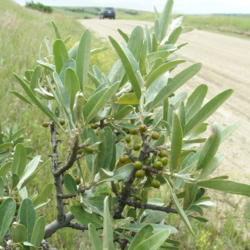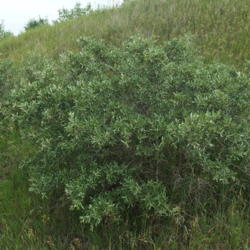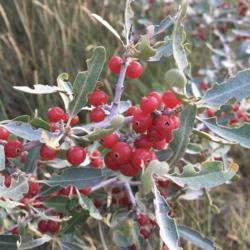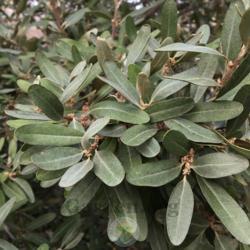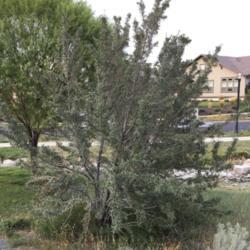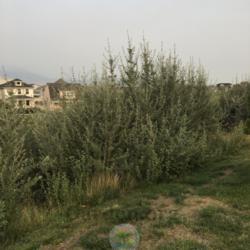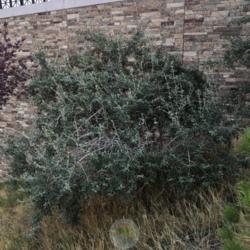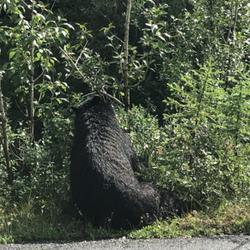| Plant Habit: | Shrub Tree |
| Life cycle: | Perennial |
| Sun Requirements: | Full Sun |
| Water Preferences: | Mesic Dry Mesic Dry |
| Soil pH Preferences: | Slightly acid (6.1 – 6.5) Neutral (6.6 – 7.3) Slightly alkaline (7.4 – 7.8) Moderately alkaline (7.9 – 8.4) |
| Minimum cold hardiness: | Zone 2 -45.6 °C (-50 °F) to -42.8 °C (-45°F) |
| Maximum recommended zone: | Zone 6b |
| Plant Height: | 6 to 12 feet, to about 20 feet |
| Plant Spread: | 6 to 12 feet, to somewhat wider |
| Leaves: | Unusual foliage color Deciduous Other: leaves are simple, obovate, silvery gray on both top and bottom and about 1 to 2 inches long and about 3/8 inches wide. |
| Fruit: | Showy Edible to birds Other: orange-red (rarely yellow) drupe-like fruit is 0.16 to 0.24 inch (4-6 mm) dia. and one seeded; somewhat sour but edible; often used in jam. |
| Fruiting Time: | Late summer or early fall Other: ripening occurs from Jul to Sep; if uneaten, fruit may dry and remain on the shrub until the following spring. |
| Flowers: | Inconspicuous Fragrant Blooms on old wood Other: male and female flowers are found on separate plants; in early spring (late April), yellow male flowers are quite noticeable; female flowers remain inconspicuous. |
| Flower Color: | Yellow |
| Bloom Size: | Under 1" |
| Flower Time: | Spring Other: flowering generally occurs from late Apr to May but may occur as late as Jul at higher elevations. |
| Underground structures: | Rhizome |
| Suitable Locations: | Xeriscapic |
| Uses: | Windbreak or Hedge Erosion control Will Naturalize |
| Edible Parts: | Fruit |
| Eating Methods: | Raw Cooked |
| Dynamic Accumulator: | Nitrogen fixer |
| Wildlife Attractant: | Bees Birds |
| Resistances: | Deer Resistant Rabbit Resistant Drought tolerant Salt tolerant |
| Propagation: Seeds: | Self fertile Stratify seeds: soak 2 to 24 hours in warm water then cold/moist stratify for 30 to 90 days at 39 to 41 degF (4 to 5 degC) or fall sow without stratification. Depth to plant seed: surface sow on moist soil, tamp and cover with sand or sow non-stratified seed 1/4 to 1/2 inches deep outdoors. Suitable for wintersowing Sow in situ Start indoors Can handle transplanting Other info: approximately 43000 seeds per pound. |
| Propagation: Other methods: | Offsets |
| Pollinators: | Bees |
| Miscellaneous: | Tolerates poor soil With thorns/spines/prickles/teeth Dioecious |
